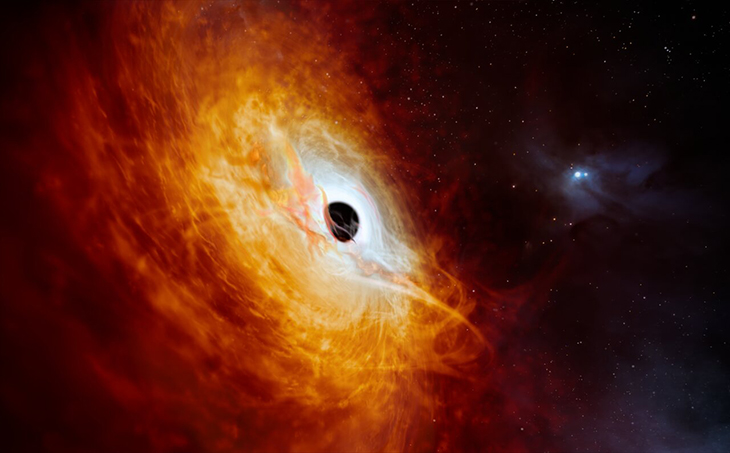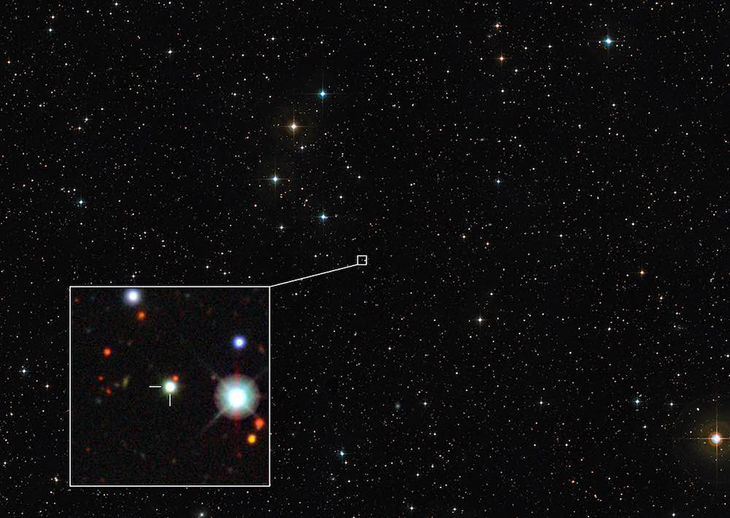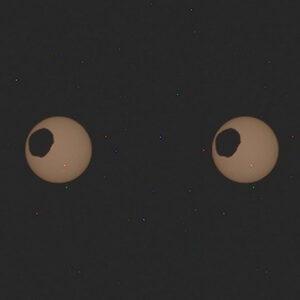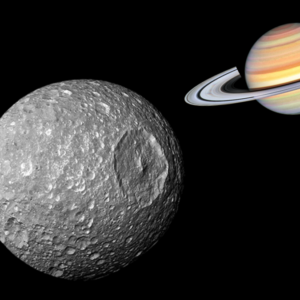
Quasars stand as luminous beacons at the hearts of distant galaxies, their brilliance fueled by the insatiable appetite of supermassive black holes. Among these celestial marvels lies a particularly extraordinary discovery: a quasar situated a staggering 12 billion light-years away, radiating with a luminosity surpassing that of 500 trillion suns.
This awe-inspiring quasar, designated J0529-4351, defies convention with its unprecedented growth rate, accreting mass at a staggering pace equivalent to the mass of one Sun each passing day. Yet, its extreme distance raises intriguing questions about its current state. Given its immense distance, it is likely that this cosmic entity has long ceased its fiery activity, its brilliance now preserved only in the form of distant echoes traversing the cosmos.
The remarkable attributes of J0529-4351 have been meticulously studied by astronomers employing the cutting-edge capabilities of the European Southern Observatory’s Very Large Telescope (VLT). This quasar, initially observed in 1980, continues to captivate scientists, offering insights into the enigmatic realms of black hole dynamics and the evolution of galaxies across cosmic epochs.
“We have discovered the fastest-growing black hole known to date. It has a mass of 17 billion Suns, and eats just over a Sun per day. This makes it the most luminous object in the known Universe,” said Christian Wolf. He is an astronomer at the Australian National University (ANU) as well as the lead author of the study published in Nature Astronomy.
Quasars, fueled by the voracious appetite of black holes at their cores, represent a cosmic spectacle of immense luminosity. These gravitational behemoths, as they gather matter from their surroundings, unleash torrents of energy, illuminating the cosmos with unparalleled brilliance. Their radiance transcends vast distances, rendering even the most remote quasars visible to observers on Earth. A noteworthy correlation emerges: the brightest quasars signify the most rapidly growing supermassive black holes in the universe.
One such example, J0529-4351, epitomizes this phenomenon with astounding clarity. As material spirals into the gaping maw of its central black hole, it forms a luminous accretion disk. The sheer intensity of this process catapults J0529-4351 into a realm of luminosity exceeding 500 trillion times that of our Sun. This staggering magnitude of light emission serves as a testament to the incomprehensible power unleashed by the gravitational forces at play within quasars.

“All this light comes from a hot accretion disc that measures seven light-years in diameter — this must be the largest accretion disc in the Universe,” Samuel Lai, ANU PhD student and co-author said.
Researchers say that remarkably, this record-breaking quasar was hiding in plain sight.
“It is a surprise that it has remained unknown until today, when we already know about a million less impressive quasars. It has literally been staring us in the face until now,” said co-author Christopher Onken. He is an astronomer at ANU. He also said that this object showed up in images from the ESO Schmidt Southern Sky Survey that had dated all the way back to 1980, but then, they had not recognized it as a quasar. The recognition only took place decades later.
Discovering quasars necessitates meticulous observation across vast swathes of the sky. The resultant datasets are immense, prompting researchers to employ machine learning algorithms for their analysis, distinguishing quasars from other cosmic entities.
However, these algorithms operate within the confines of the existing data, potentially overlooking novel quasars that surpass the luminosity of known counterparts. In such cases, the program might misclassify these luminous entities as nearby stars, hindering their identification.
Unraveling the enigma of distant supermassive black holes holds profound implications for understanding the early Universe. Delving into their properties offers insights into the formation and evolution of both the black holes themselves and the galaxies they inhabit.
What are your thoughts? Please comment below and share this news!
True Activist / Report a typo


